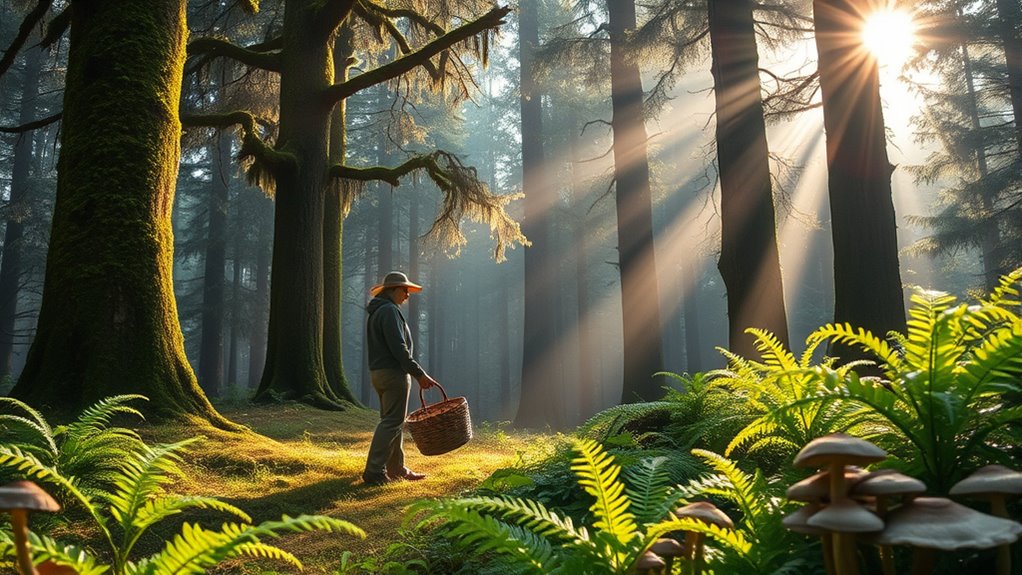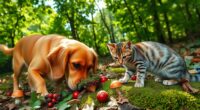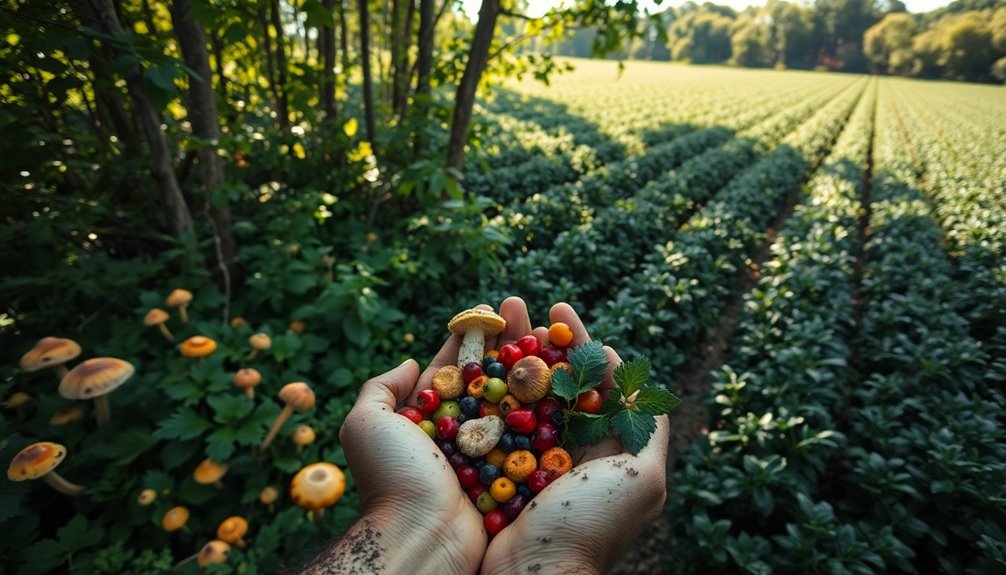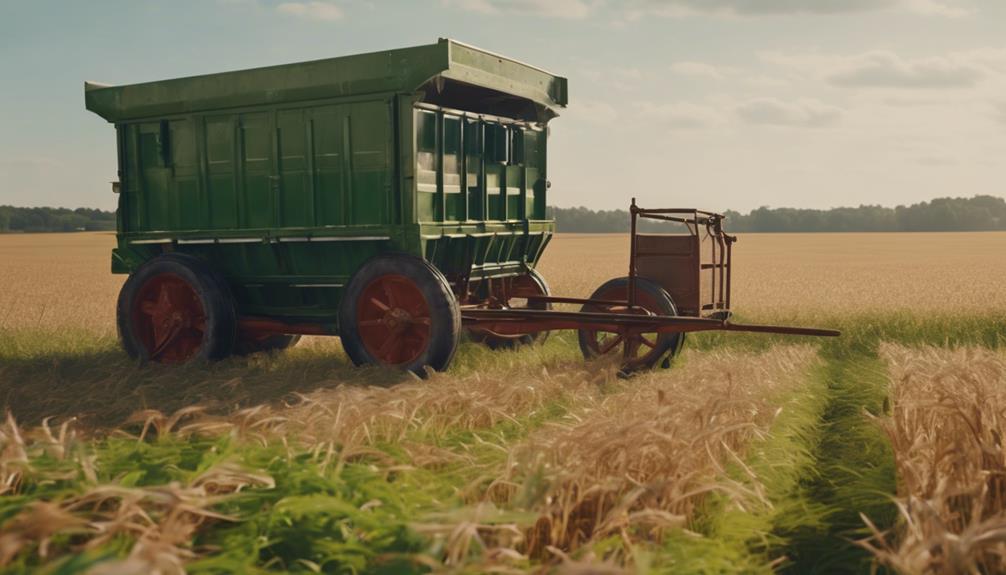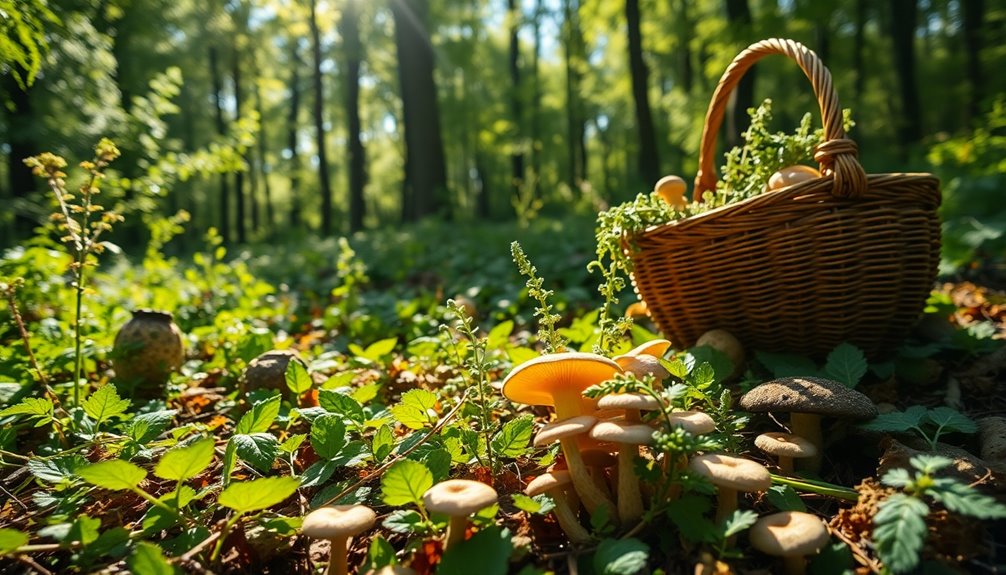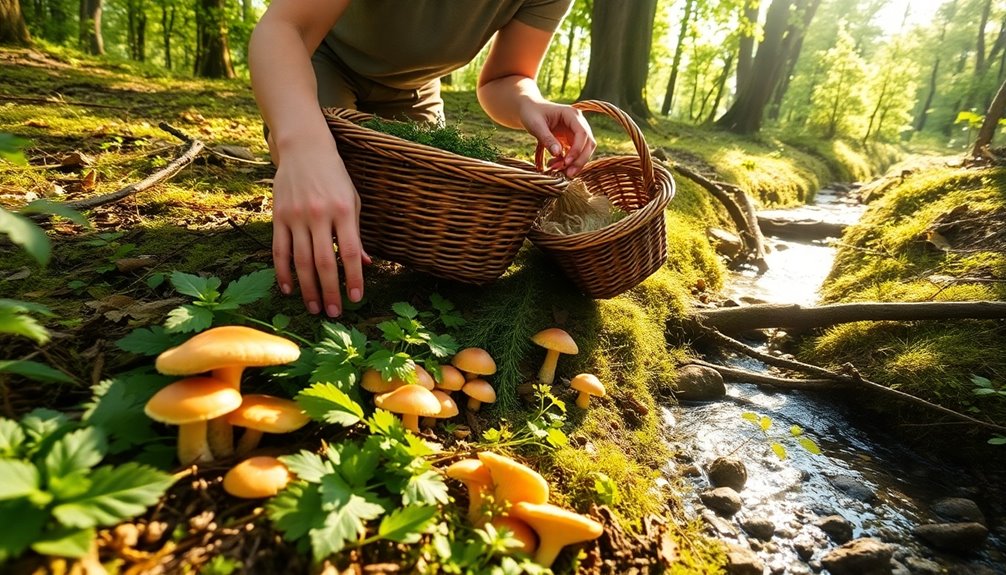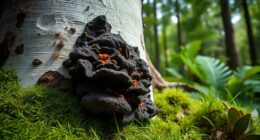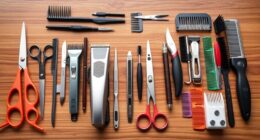When foraging alone, plan your route carefully by choosing familiar, low-disturbance locations with abundant resources. Carry essential gear like GPS, a map, and safety supplies, and always identify plants confidently before harvesting. Stay aware of your surroundings, avoid risky zones, and tell someone your plans. Use natural landmarks for navigation and take your time scouting. To master safe, sustainable foraging, it’s best to build your knowledge and stay prepared for every trip. Continue to explore these tips to stay safe and successful on your solo adventures.
Key Takeaways
- Plan your route using maps, GPS, and natural landmarks; inform someone of your plans and expected return time.
- Carry essential safety gear, communication devices, and enough supplies to handle emergencies alone.
- Choose familiar, low-disturbance locations with abundant, easily identifiable resources to minimize risks.
- Practice confident plant and mushroom identification with guides and expert advice before harvesting.
- Stay aware of environmental impacts; harvest responsibly to ensure sustainability and avoid habitat damage.
Choosing the Right Foraging Locations
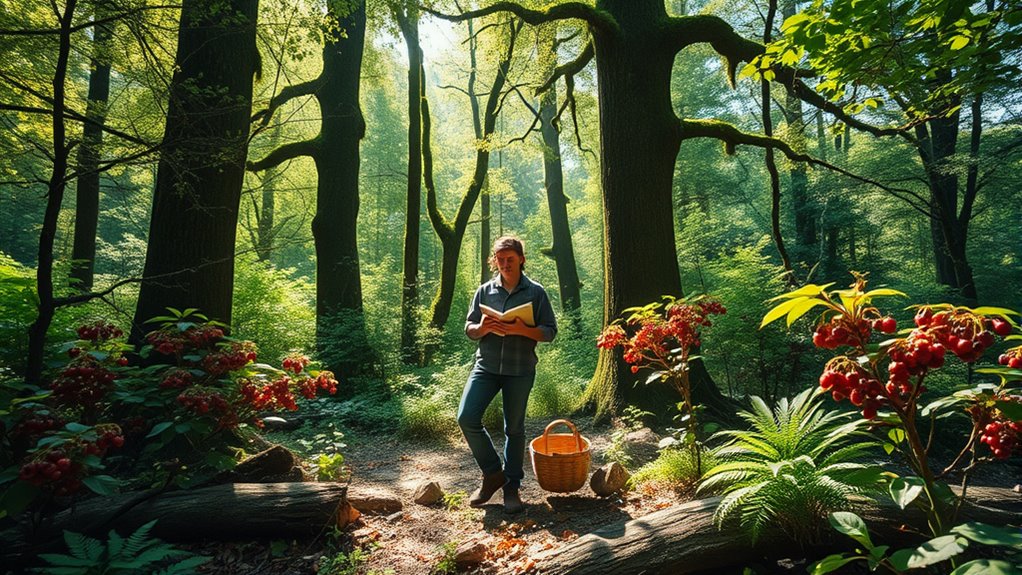
Have you ever wondered how selecting the right foraging location can make all the difference? Your success depends on choosing areas that support your target species, like forests for mushrooms or meadows for herbs.
Research local climate and seasonal patterns to find peak times and spots. Stick to places with minimal human disturbance to avoid contamination and increase your chances of finding abundant, healthy plants.
Research local climate and seasons to identify prime foraging times and locations.
Diverse ecosystems are ideal because they offer a wider variety of foraged items. Diverse ecosystems provide a more sustainable environment for both foragers and local flora, promoting healthy harvesting practices. Additionally, understanding the local biodiversity can help identify which plants are native and less likely to be invasive, ensuring ethical foraging.
Proximity to water sources matters, since many edible plants thrive in moist environments. Utilizing predictive analytics can help identify optimal regions and times for foraging based on historical data.
Being aware of local regulations and legal permissions can help you avoid issues and ensure sustainable harvesting practices. Focus on accessible locations with manageable terrain, clear paths, and legal permissions. These choices help guarantee a safe, productive foraging experience while protecting the environment.
Essential Safety and Environmental Practices
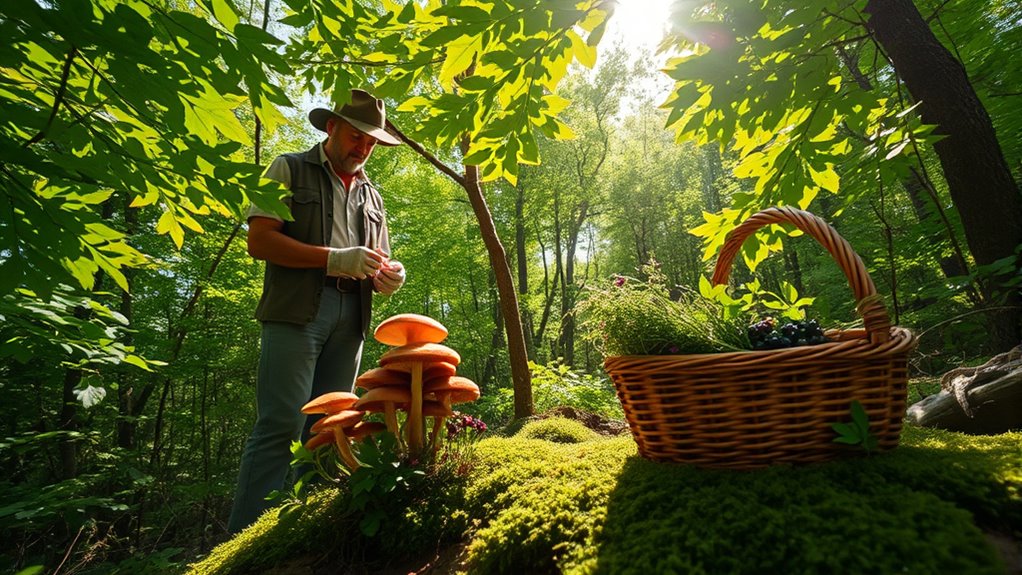
Ensuring safety and protecting the environment are essential aspects of responsible foraging. Always identify plants with certainty before harvesting—use field guides, apps, and expert advice to avoid dangerous or unknown species. Familiarize yourself with poisonous lookalikes to prevent mistakes.
When harvesting, follow conservation principles: don’t over-harvest and respect the plant’s role in its ecosystem. Avoid damaging habitats and adhere to local regulations and permits. Incorporating knowledge about vetted sources, such as trusted organizations and guides, can enhance your understanding and safety during foraging trips. Additionally, understanding unique and wicked planters can inspire sustainable and creative ways to cultivate edible plants at home, supporting environmental health.
Stay aware of pollution risks by choosing clean locations away from industrial zones and runoff. Wear protective gear to prevent injuries and recognize weather or terrain hazards. Carry essentials like water, a first aid kit, and a communication device. Practicing these safety and environmental habits, supported by industry standards, guarantees memorable, sustainable foraging trips. For example, being familiar with home cultivation techniques can help you grow your own food responsibly and reduce wild-harvesting pressures.
Necessary Gear and Supplies for Solo Adventures
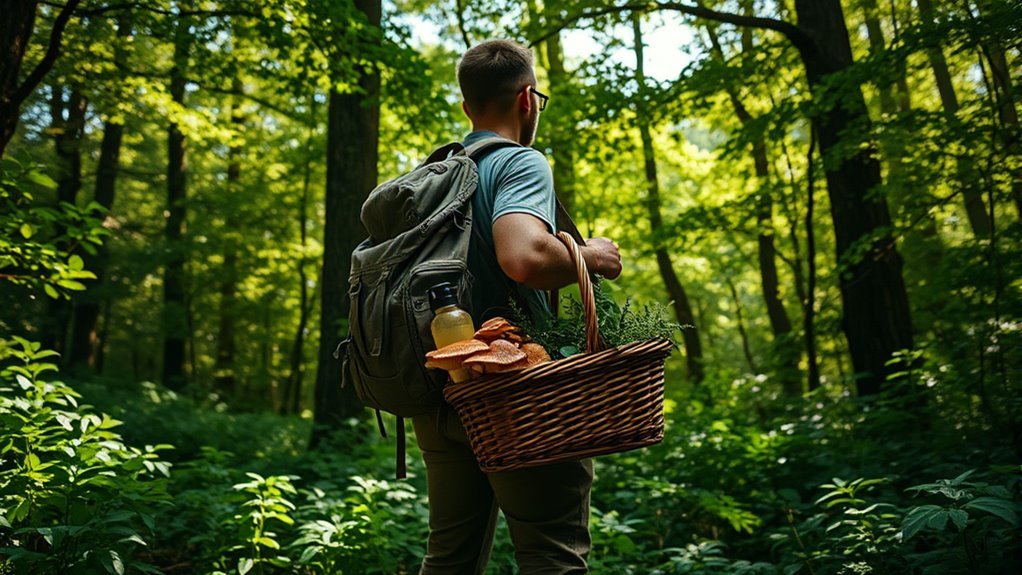
Beginning on a solo foraging trip requires you to be well-equipped with the right gear and supplies to guarantee safety, efficiency, and success. Essential harvesting tools include Felco pruners for trimming, a Hori-Hori or weeding knife for digging roots, a digging fork for lifting tubers, a shovel for tough soil, and a heavy-duty chopping knife for tough plant material. Using well-drained soil can help prevent tools from becoming bogged down and improve your harvesting efficiency. Safety gear like bear spray, bug spray, head nets, gloves, and waders protect you from hazards and insects. Carry plenty of harvesting bags, buckets, or backpacks to transport your finds without damage. Stay hydrated with water bottles or filters, and pack non-perishable snacks or portable meals for energy. Navigation tools like a map, compass, or GPS, along with a first aid kit, ensure you’re prepared for any situation. Incorporating self watering plant pots into your garden can also help maintain healthy plants with less frequent watering, freeing up more time for your foraging adventures.
Mastering Plant Identification Techniques
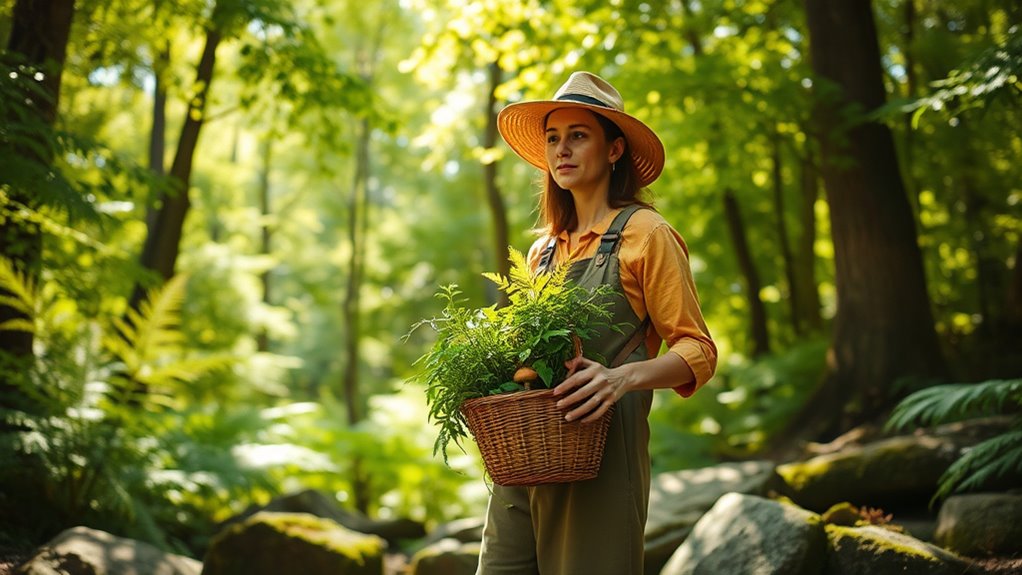
Mastering plant identification techniques is essential for safe and successful foraging. You should start by understanding the plant’s habitat and geographic range, as these clues narrow down possibilities. Pay attention to micro-ecosystems, since specific plants thrive in particular environments. Developing your understanding of plant morphology can greatly enhance your ability to distinguish similar species. Examine leaf characteristics carefully, noting shapes, arrangements, venation, and margins. Flowers, seeds, and fruits provide critical identification features, so observe their shapes, colors, and structures. Use identification keys that ask yes/no questions about visible traits, beginning with easy-to-see features like foliage color and progressing to finer details like floral parts. Practice Newcomb’s method by noting flower types, plant structure, and leaf features, cross-referencing local guides. Additionally, understanding plant families can improve your accuracy and confidence. Recognizing plant diversity within a family can help differentiate closely related species more effectively. Developing your knowledge of cryptic species can also aid in identifying plants that are easily mistaken for others. Building your observation skills and understanding plant families will improve your accuracy and confidence, especially when encountering rare or unusual plants in the wild.
Recognizing and Handling Uncertain Finds

When you encounter a plant or mushroom that you’re unsure about, exercising caution is essential to avoid health risks. Always avoid uncertain finds and rely on trusted sources like field guides and respected publications for identification. Incorporating vetted products and resources can further ensure your safety when foraging. Connecting with experienced foragers can provide valuable insights and help confirm or rule out your suspicions. Pay close attention to environmental factors—habitat, season, and host trees—that can aid in identification. Use visual cues like leaves, flowers, and fruit, and don’t overlook smell and texture. Remember, apps and technology are helpful but shouldn’t be your only reference. When in doubt, it’s safest to skip the uncertain find. Prioritize safety, and always double-check with multiple sources or experts before consuming anything you’ve identified. Recognizing developmental stages can also help determine whether a plant or mushroom is likely safe or harmful. Additionally, understanding the effectiveness of eye patches can guide you in choosing suitable products for your needs. Consulting reputable field guides and authoritative publications can further enhance your confidence in identification and safety. Being familiar with safe harvesting practices is crucial to prevent contamination or accidental ingestion of toxic species.
Navigating With GPS and Staying Oriented
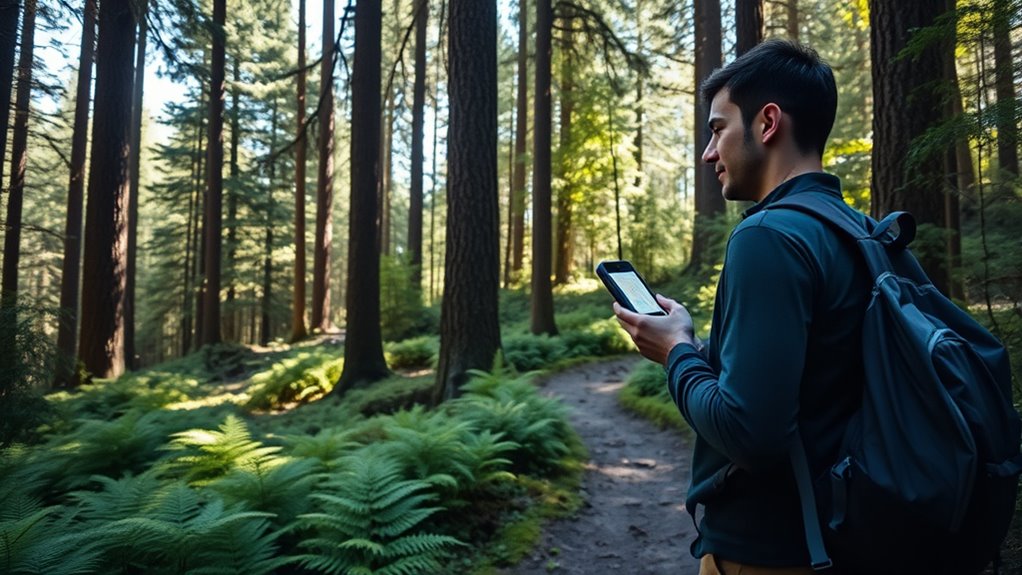
Using GPS tools can greatly improve your ability to find and revisit foraging spots, especially when venturing into unfamiliar terrain. Apps like Forager’s Buddy let you mark locations using GPS, making it easier to return later. Incorporating detailed map layers, such as satellite images and topographic maps, can further enhance your navigation accuracy. Gaia GPS offers detailed map layers, including satellite images and topographic maps, helping you understand terrain features. Many GPS apps work offline, which is crucial in remote areas without cell service. Be aware that signs of spoilage in food and drink can help you avoid consuming unsafe items during your foraging adventures. To stay oriented, familiarize yourself with natural landmarks and use sun or stars when needed. Record routes and mark key spots for quick reference. Always carry backup navigation tools like a compass and paper map, and ensure your device has a full battery or spare power. Staying aware of your surroundings keeps you safe and confident during solo foraging trips.
Sustainable Harvesting and Responsible Foraging
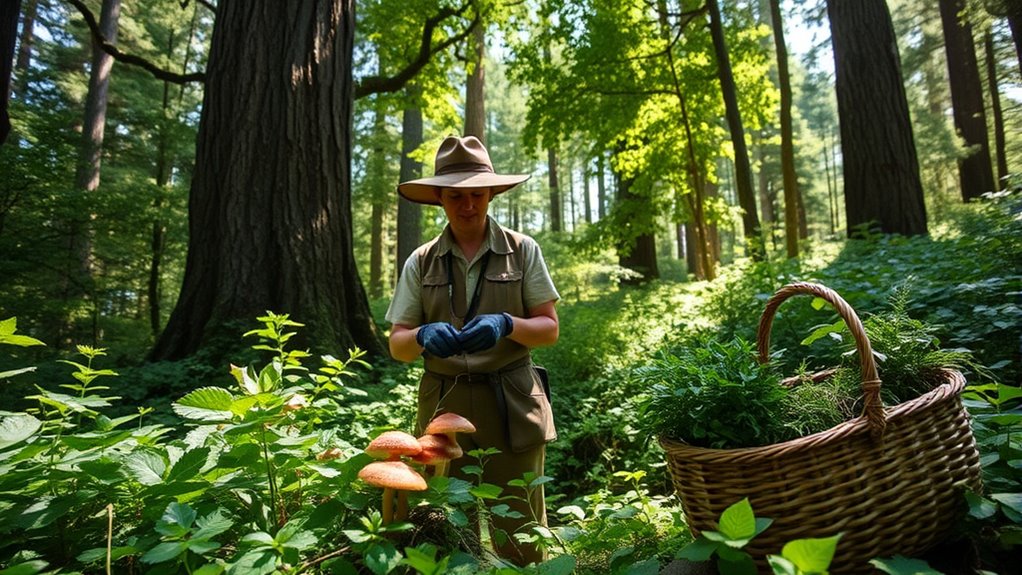
Practicing sustainable harvesting and responsible foraging guarantees that you can enjoy wild foods without harming the environment. Focus on abundant species with large, healthy populations, and only take what you need to avoid over-harvesting.
Proper identification is essential—misidentifying plants can cause harm or legal issues, so use field guides or consult experts when unsure. Recognizing the cultural significance of certain plants helps ensure respectful foraging practices and preservation of traditions. Additionally, understanding the nutritional value of wild edibles can enhance your foraging experience and benefits.
Harvest responsibly by using techniques that minimize damage to plants and their surroundings, and target plants during their peak season to support future growth. Understanding the weight of wind turbine blades can also inspire you to consider sustainable energy sources in your community efforts.
Being aware of the unique and wicked planters available in the wild can also help you select the most sustainable options for foraging. Incorporating environmental impact assessments into your planning can further help preserve local ecosystems. Your mindful approach ensures the vitality of wild resources for generations to come.
Respect local laws and avoid plants considered sacred or culturally significant.
Keep disturbance to a minimum by practicing Leave No Trace principles, fostering biodiversity, and recognizing the interconnectedness of ecosystems.
Building Local Knowledge and Community Connections
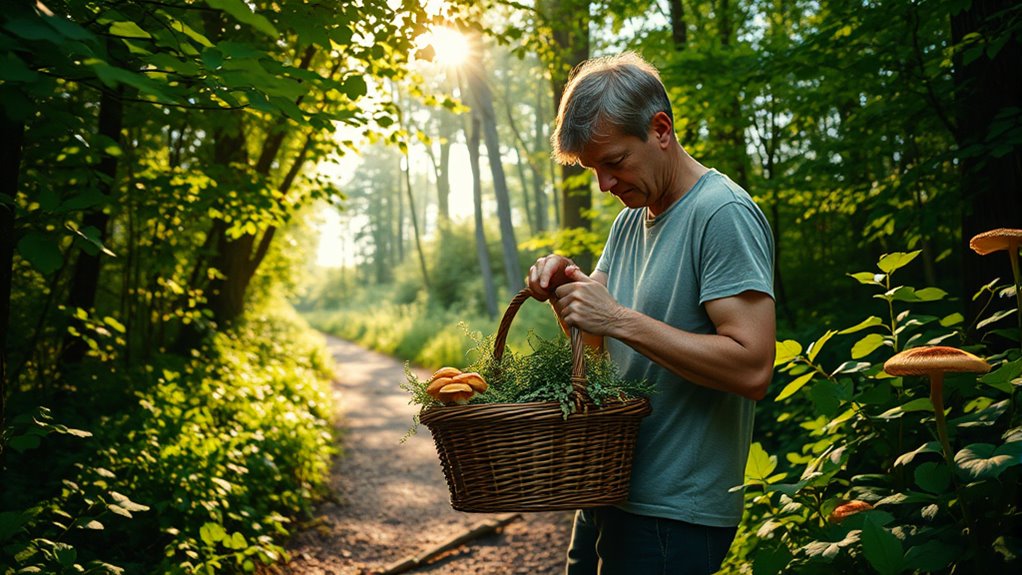
Building a strong foundation of local knowledge enhances your foraging practice and helps you connect more deeply with your environment. By learning to identify native plants and understanding seasonal variations, you’ll know what’s available throughout the year.
Recognizing microclimates allows you to find plants in specific spots when others might be scarce. Document your finds with photos and notes to build a personal database, making future identification easier.
Sharing your knowledge with others in your community amplifies learning and fosters connections. Joining foraging groups, attending local workshops, and participating in community events create opportunities to exchange tips and experiences.
Staying Safe and Prepared During Your Foraging Trips
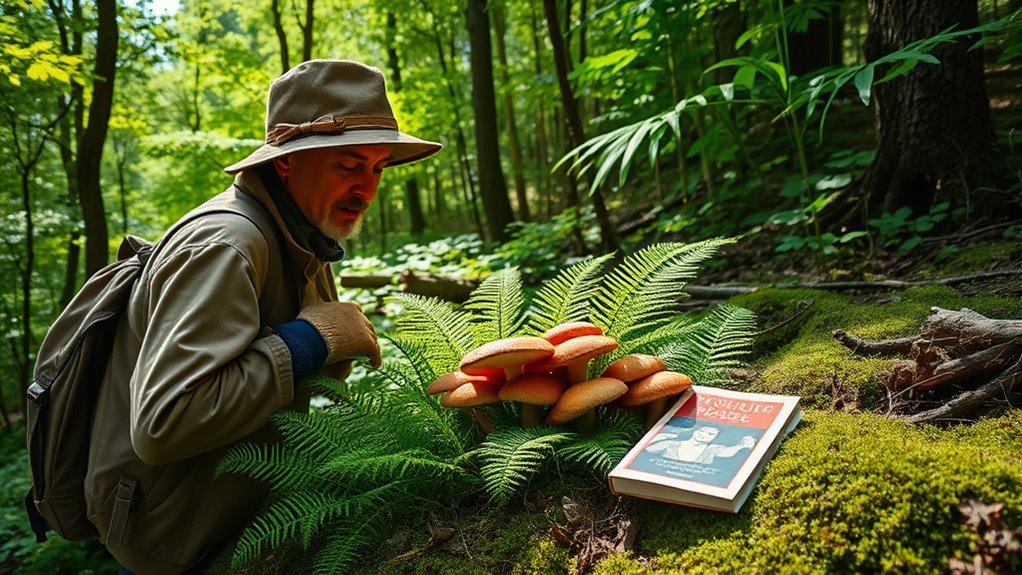
To stay safe and prepared during your foraging trips, it’s essential to plan ahead and stay vigilant at all times. Make sure you can confidently identify edible plants by consulting multiple field guides and joining online forums or local groups for expert advice.
Learn to spot poisonous lookalikes and practice identifying plants in various environments. Always harvest sustainably by taking only what you need, avoiding contaminated areas, and using proper tools like gloves and cutting instruments.
Stay aware of your surroundings, avoiding industrial zones, private property, and protected areas. Inform someone of your plans, carry a communication device, and bring safety gear such as gloves and a first aid kit.
Keep hydrated, dress appropriately, and have navigation tools ready for a safe, enjoyable foraging experience.
Frequently Asked Questions
How Do I Start Learning Plant Identification as a Beginner?
To start learning plant identification, you should begin with basic botany and familiarize yourself with local flora. Use field guides, online resources, and plant manuals to study leaf shapes, flower colors, and growth patterns.
Practice observing plants in controlled environments like gardens, and join foraging groups for hands-on experience. Always prioritize safety, learn poisonous plant signs, and keep updating your knowledge to improve your skills over time.
What Are Common Mistakes to Avoid During Solo Foraging?
Did you know that misidentification causes over 80% of mushroom poisoning cases? During your foraging, avoid common mistakes like rushing identification—always double-check with multiple guides.
Don’t forget to examine all plant parts thoroughly, and never assume safety based on appearance alone.
Stay aware of pollution risks, carry essential gear, and plan your route carefully. These precautions help protect you and guarantee a safe, enjoyable foraging experience.
How Can I Tell if a Plant Is Seasonal or Out of Season?
To determine if a plant is seasonal or out of season, observe its growth stage and features. Pay attention to flowering, leaf emergence, and fruit production, which align with specific times of the year.
Keep a journal of these patterns, use regional guides, and monitor the plant regularly. By noting these cues and consulting experts, you’ll confidently identify when a plant is in season or not.
What Should I Do if I Get Lost During Foraging?
If you get lost during foraging, stay calm and assess your surroundings. Use landmarks, the sun, or a compass to estimate your location.
Find shelter to protect yourself from the elements and conserve energy. Stay hydrated, and if possible, use noise-making devices or reflective materials to signal for help.
How Do I Ensure I’M Foraging Sustainably and Ethically?
Imagine you’re foraging in a protected forest and want to do it responsibly. You follow local regulations, identify plants carefully, and harvest only what’s needed, avoiding overexploitation.
You ask permission if on private land, respect indigenous rights, and leave the area cleaner. By using sustainable techniques, supporting biodiversity, and staying informed through guides, you guarantee your foraging benefits the environment and respects community and ecological balance.
Conclusion
As you set out on your solo foraging adventures, remember that patience and respect for nature will be your best guides. Embrace each outing as a gentle journey of discovery, where every find is a quiet treasure. By staying mindful and prepared, you’ll cultivate a deeper connection with the wild, turning simple outings into enriching experiences. Trust your instincts and enjoy the peaceful rhythm of foraging on your own—nature’s quiet invitation awaits.

